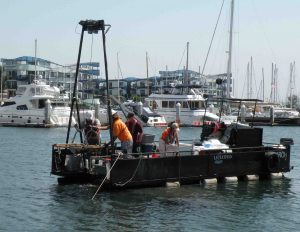Marina del Rey Harbor study highlights need for improved tools to investigate cause of sediment toxicity

SCCWRP and its partners have completed a comprehensive investigation into the potential causes of degraded sediment quality in Marina del Rey Harbor, a study that has underscored the need for next-generation sediment Toxicity Identification and Evaluation (TIE) analysis methods.
The one-year study was not able to associate any of the toxic chemicals listed in the boat harbor’s Total Maximum Daily Load (TMDL) regulatory plan with the sediment toxicity measured during laboratory testing.
Consequently, researchers were not able to determine which specific toxics are responsible for the impaired condition of sediment-dwelling marine communities in the Los Angeles County boat harbor.
The study did, however, confirm that sediment toxics could be a cause of impairments to bottom-dwelling biological communities in the harbor.
Researchers theorize that other types of toxic chemicals that enter Marina del Rey Harbor via stormwater runoff could be responsible for the toxicity observed during the TIE analysis.
The study has highlighted the need for new, more sensitive alternatives to traditional TIE testing methods, which were developed decades ago.
The Marina del Rey study marked the first formal demonstration of the stressor identification process required under the state’s water quality control plan for sediment quality, and one of the first attempts to characterize the cause of impacts to bottom-dwelling marine communities.
More news related to: Sediment Quality